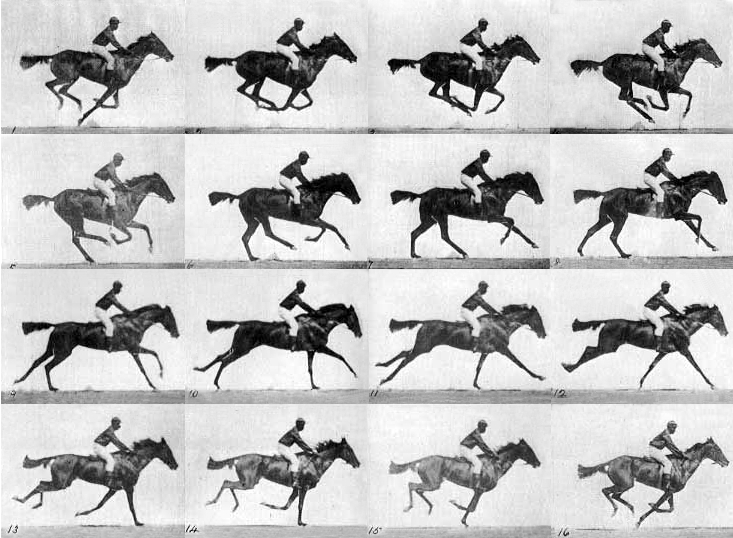Gait and motion Biomechanics
Note: This webpage is incomplete, please refer to the pdf version of the notes on blackboardGait Biomechanics
University of Reading references are
- Wittle's gait analysis (call 612.76-WHI)[Richards23:_whitt], the 5th edition is available online as call XX(2179256.1)
- Gait Analysis: Normal and pathological function (call 612.76-PER) or online as XX(2179265.1) [jacquelin2010gait]
Definitions and concepts
| gait cycle | A complete stride from initial contact to initial contact |
| Step length | distance between left and right foot placement |
| Stride length | distance covered in one gait cycle |
| stride | 2 steps or 1 pace |
| Cadence | steps per second |
The roman definition of a pace is two steps. Since a roman mile is defined as 1 mile=1000 paces this gives a step as approx 800mm
Animal Gaits
Gaits can be static or dynamically stable, symmetrical or asymmetrical and mostly involve an even number of legs[Alexander92:_explor_biomec].
A gait is described by two variables for each foot:
- Relative phase, phase shift between the different feet
- Duty factor (fraction of the time spent on the ground)
Quadruped gaits
| some animals | |
| Trot | Pig |
| Canter | equine |
| Transverse gallop | Elk |
| Rotary gallop | |
| Rack/Pace | Giraffe/Camel |
| Pronk | |
| Walk | |
| Bound/Buck |
See Gresham Lecture[stewart13:_how_mathematicians_think_about_patterns] "How Mathematicians think about patterns" (at 55:00 mins)
Examples of cheetah running gait with Hildebrande diagram, also zebra running gait in (https://mammals-locomotion.com/walking.html)
Symmetrical gaits
Footfalls of a pair of feet are equally spaced in time
- Bipedal Walk -- duty factor $> 0.5$ for each foot
- Bipedal run – duty factor $< 0.5$
- Quadruped Trot -- feet of diagonal limb pair fall synchronously; duty factor $\approx 0.5$
- Pace -- feet of lateral limb pair fall synchronously; duty factor $\approx 0.5$
Asymmetrical gaits
Footfalls of a pair are not equally spaced in time
- Gallop and canter
- Half-bound
- Full bound
- Pronk

Figure t.b.d. (fig:tripod) is from Alexander 1992[Alexander92:_explor_biomec]

Human gaits
Biped gait can be considered as several states in two phases
Stance phase
- IC = Initial contact, similar to HS = Heel strike
- FF = Foot Flat
- MS = Mid Stance (centre of gravity over the area of the foot)
- HO = Heel Off
- TO = Toe Off
Swing phase
- SP = Swing
- MS = Mid Stance


There is discussion as to the principles of human walking in particular do we walk to save energy or to avoid accelerating our head and body[kuo2007six]
Section missingGround reaction forces



bare foot running
- (http://barefootrunning.fas.harvard.edu/1WhyConsiderFootStrike.html)
- (http://barefootrunning.fas.harvard.edu/4BiomechanicsofFootStrike.html)
Gait initiation and termination
Initiation requires
- Body weight shift to static foot
- half step while body weight moved ahead of static foot.
- Problematic for some people with Parkinson's
Termination
- CNS plans a shorter step
- Presumably an inverted pendulum dynamic
Age and pathology determinates of gait
Gaits evidently change with age and with conditions such as cerebral palsy, muscular conditions such as SMA or MD, Parkinson's disease, stroke, orthopaedic difficulties, etc. For details see texts such as Whitaker, Perry etc.
Young gaits
- Wider walking base (greater stability)
- higher cadence, smaller stride length
- Foot-flat grund contact
- Less stance phase knee flexion
- Less arm swinging
- external rotatio at the hip (see Whittaker, and Sutherland 1988)
Parkinson's
- Stride length and speed reduced (although increase when on L-Dopa)
- Walking base increased
- Range of motion of hip, knee and ankle reduced,
- Arm swings reduced
- Trunk rotates in phase with pelvis c.f. antiphase in more typical walking
- Gait takes longer to stabilise (more than two or three steps)
- Gait variability reduced when on L-Dopa
Appendix, passive dynamic walkers
Knees
- (https://www.youtube.com/watch?v=WOPED7I5Lac)
- (https://www.youtube.com/watch?v=FfKQSUhYjlY)
- (https://www.youtube.com/watch?v=qwEWki9H0Ao)
- (https://www.youtube.com/watch?v=CK8IFEGmiKY)
- (https://www.youtube.com/watch?v=_2pAMe_5VeY)
- (https://www.youtube.com/watch?v=e2Q2Lx8O6Cg) video:Steve Collin Passive dynamic walking
- (https://www.youtube.com/watch?v=uU0baFifDKE)
No knees
Ruina lab Cornell
- (https://www.youtube.com/watch?v=CrSe4rVu-oM)
- (https://www.youtube.com/watch?v=yseSSwcEjrg)
- (https://www.youtube.com/watch?v=durPmC42MHM) knee-less (288 seconds)
- (https://www.youtube.com/watch?v=EEEN2rz0BUM)
- (https://www.youtube.com/watch?v=N64KOQkbyiI)
- (https://www.youtube.com/watch?v=W5jyy-stZrk)
28/11/2023